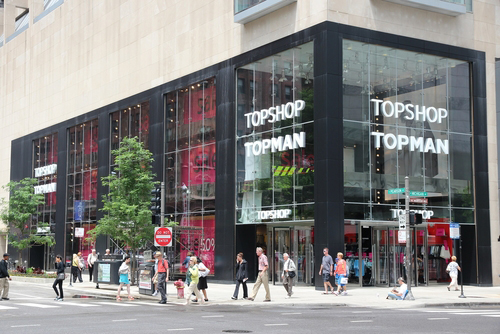Retailers are more confident than ever before to follow other high street brands on to the international stage.
Leading fashion retailers H&M, New Look, Topshop and Miss Selfridge are among many who are continuing to expand into new international territories, with Primark investing £200m to crack the US market and recently announced that it will be leasing space from American retail giant Sears.
Clearly a thriving economy has stimulated an unprecedented growth of retailers expanding into the global market. The fast moving pace of technology means that the online world has become a smaller place with no barriers, and the opportunity for retailers to reach and engage with this rapidly expanding universal audience is a great opportunity.
My advice to retailers would be – don’t rush it.
Your website is your shop window in every country you have a presence so needs a considerable amount of time and investment to get it right. Taking your brand global is not just about translating your original website and launching it in each country – to simply translate content is missing the point, so don’t take any short cuts. It’s about having the necessary expertise and a solid understanding of what works in each individual market, from language through to cultural nuances, in order to make it successful.
Just as in fashion, one size doesn’t necessarily fit all; the same applies to your online platform. From web page layout, to word definitions and cultural preferences countries have widely varying practices. Using a standardised template and failing to pay attention to detail will inevitably lead to a decline in sales and general interest in the brand online.
The real secret to success comes down to understanding the linguistic and cultural differences that not only attract and convert new customers but also encourages them to continue returning.
Online shoppers expect more from their retail providers in terms of personalisation. So, to keep new visitors on your website and convert them into customers, familiarise yourself with local market needs, behaviours, competition, trends and many other influencing factors. This could include anything from the number of drop downs on the homepage, the colours you use on your website, to the common method of payment.
For instance, red means luck in China, beauty in Russia, danger in Germany but more importantly should be the colour retailers use when displaying discounted prices on their websites in the US.
Retailers will only get this kind of knowledge and insight into different markets by taking the time to carefully research what works in each market. Even the largest retailers have stumbled in their global moves by failing to consider style and cultural differences so make sure you’re not one of those who fail – consider local when you go global and you won’t go wrong.
Image Credit: Tupungato / Shutterstock.com






